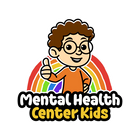|
Key Takeaways:
- Bipolar disorder in children manifests as mood swings, depressive spells, defiance, reckless behavior, and sudden bursts of energy.
- To diagnose bipolar disorder in children, a child therapist conducts interviews, medical exams, and symptom monitoring.
- You can support a child with bipolar disorder by learning more about the condition, teaching coping mechanisms, and keeping them physically healthy.
|
In the United States, bipolar disorder in children is becoming more common, and it can quickly escalate into something difficult to manage.
Understanding the signs of bipolar disorder in children and developing the appropriate treatment plan can keep their symptoms manageable. This article will explain what bipolar disorder is, its causes, diagnosis, and treatment to consider.
What is Bipolar Disorder?
Bipolar disorder is a lifelong mood disorder and mental health condition causing mood swings and significant shifts in energy levels, thinking patterns, and behavior. These swings and shifts can last hours, days, weeks, or even months.
Bipolar disorder most commonly occurs in young adults and, though rare, can also occur in younger children. According to the American Psychological Association, 4% of teenagers under 18, including children as young as 5, have the disorder [*].
Signs of Bipolar Disorder in Children
The most common signs of bipolar disorder in children are mood swings or mood episodes referred to as mania. Manic episodes can occur in “bursts” and manifest as children feeling overly excited and, possibly, leading to extreme agitation or even rage.
It’s more common to see manic depression in children (or mixed episodes). Some children may also demonstrate rapid cycling, during which they shift between hypomania and depression.
If you suspect your child experiences manic episodes, you might notice these symptoms:
- Having frequent tantrums or feeling constantly irritable
- Having sudden bursts of energy, even during inappropriate situations
- Talking very fast, interrupting people, and not allowing others to talk
- Being defiant and destructive
- Being distracted and having trouble focusing on tasks
- Behaving recklessly and taking risks
- Being impatient, restless, and fidgety
Children who have depressive episodes might demonstrate the following symptoms:
- Crying a lot
- Feeling unprovoked sadness
- Losing interest in friends or things they used to enjoy
- Talking negatively about themselves and their experiences
- Complaining of physical symptoms like sleep troubles, headaches,
- stomachaches, and tiredness
- Being extremely sensitive to rejection or criticism
- Having low energy and high irritability
What Causes Bipolar Disorder in Children?
There is no singular cause of bipolar disorder in children. However, scientists believe that it could be inherited from a parent with bipolar disorder [*]. Other potential causes of bipolar disorder in children might include:
- Traumatic life events like abuse or the death of a family member
- Physical changes in the brain
- Unsafe or unstable environments
- Low socioeconomic status and the effects of poverty [*]
- Environmental toxins [*]
How is Bipolar Disorder Diagnosed in Children?
As per the National Institute of Mental Health, professionals diagnose bipolar disorder in children based on severity, duration, and frequency [*]. You can start by taking your child to their pediatrician, who will perform a physical exam and collect a thorough medical history.
Then, their healthcare provider will perform other medical exams, such as blood tests, to rule out other conditions that may be causing your child’s symptoms. Finally, a child psychologist or psychiatrist will perform a mental health evaluation.
During this evaluation, the psychologist or psychiatrist will ask questions about your child’s mood episodes, interview other family members, and ask parents to track symptoms.
Sometimes, bipolar disorder is prone to misdiagnosis because of symptoms similar to those in other illnesses like schizophrenia. Thus, many child psychiatrists consider the disorder over longer periods—not just the current symptoms.
How is Bipolar Disorder Treated in Children?
Treating bipolar disorder in children requires a lifelong commitment and a good balance of medication, psychotherapy, and lifestyle adjustments. Developing a comprehensive treatment plan that works for your child can take months or even years.
Medication
Children with bipolar disorder are most commonly prescribed mood stabilizers like lithium or valproic acid. They might also prescribe second-generation antipsychotics like cariprazine and lurasidone to help with manic and depressive episodes [*].
These medications help stabilize children by decreasing abnormal brain activity, regulating neurotransmitters like serotonin, and calming the body.
However, they can also cause side effects like weight gain, drowsiness, nausea, and fatigue. Discussing these effects with your child’s doctor and being open to trying different medications is important.
Therapy
The most common treatment for children with bipolar disorder is psychotherapy or talk therapy, as it can help them identify and challenge troubling thoughts and behavior.
Some of these sessions might include other family members. For example, your therapist might recommend psychoeducation, where all family members learn more about the child’s condition. Your healthcare provider might also recommend family-focused therapy (FFT), an evidence-based treatment that helps family members improve communication and problem-solving skills concerning mood episodes [*].
If your child’s condition has disrupted their sleep routine, your therapist might recommend chronotherapy, which involves re-establishing a predictable sleep regimen [*].
Another option is interpersonal and social rhythm therapy (IPSRT), which helps children understand their biological and social rhythms and how these affect their moods [*]. IPSRT focuses on managing stressful life events, reducing disruptions in social behaviors, and learning to take medications on time.
Lifestyle changes
A child’s lifestyle choices can significantly impact their mood. Thus, keeping things healthy, manageable, and positive in school, home, and public is essential.
Developing a daily schedule can keep things predictable and reduce the chances of unexpected or traumatic events. Exercise is also helpful, as it keeps children from becoming sedentary or too distracted.
Another aspect to consider is diet. Eating nutrient-dense foods like fresh fruits, vegetables, lean meats, nuts, and seeds can prevent disease in general. Certain foods, such as fatty fish, dark chocolate, fermented foods, beans, lentils, and berries can improve mood by impacting neurotransmitters [*][*].
What is the Outlook for Bipolar Disorder in Children?
Unless there is early intervention and proper treatment, the outlook for bipolar disorder in children is often poor. Children and teenagers who don’t receive treatment typically turn to excessive substance use, risky and potentially dangerous behavior, and suicide.
Can Bipolar Disorder Be Prevented in Children?
While there is no way to prevent bipolar disorder in children, parents can significantly improve their child’s symptoms by seeking early intervention. It’s better to treat symptoms before they get worse.
Supporting a Child with Bipolar Disorder
Supporting a child with bipolar disorder can be challenging for many parents, but staying vigilant can make things more manageable. Here’s what you can do to help:
- Track your child’s moods: Keep a symptom diary and observe how your child’s moods change as they go through therapy and take medication.
- Teach your child coping mechanisms: Having bipolar disorder can make it challenging to manage stress. Teaching your child coping mechanisms like meditation, grounding, and mindfulness can relax them.
- Maintain a consistent home routine: Keeping things predictable at home can keep children more stable and at ease.
- Help them develop a strong support system: Having bipolar disorder can make a child feel alone. They need to have people they can count on when experiencing mood episodes. You can explain their condition to the parents of their closest friends and encourage them to engage in healthy outlets with their peers.
Frequently Asked Questions
At what age does bipolar disorder start?
Type 1 bipolar disorder can manifest as early as 12, with juvenile-onset diagnosis being fairly common [*]. However, individuals usually receive a diagnosis in their teenage years or early 20s.
Is my child ADHD or bipolar?
Some symptoms of ADHD in children and bipolar may overlap, making a diagnosis challenging. However, you should note that ADHD primarily concerns a child’s attention span and ability to focus, while bipolar disorder is a mood condition.
If you’re concerned about your child’s behavior, it’s best to seek professional help and avoid self-diagnosing.
What is commonly mistaken for bipolar disorder?
Bipolar misdiagnoses are common because of symptom overlaps and comorbidities. Your child could be misdiagnosed with major depression, schizophrenia, or generalized anxiety disorder (GAD) because of common symptoms like anxiety, agitation, difficulty concentrating, and irrational thoughts.
The Bottom Line
Bipolar mood episodes in children may come and go, but the condition will require lifelong maintenance. With a strong support system and access to the right treatment, your child can overcome the obstacles associated with bipolar disorder.
Browse our collection of worksheets to help your child learn more about their mental health. You’ll find handouts and posters that can help them overcome troublesome symptoms and understand different aspects of their well-being.
Sources:
- Abrams Z. “Treating bipolar disorder in kids and teens.” American Psychiatric Association, 2020.
- James F, McMahon FJ. “The genetics of bipolar disorder.” Molecular Psychiatry. 2020.
- “Bipolar Disorder.” National Institute of Mental Health (NIMH), 2025.
- Ridley M, Rao G, Schilbach F, Patel V. “Poverty, depression, and anxiety: Causal evidence and mechanisms.” Science. 2020.
- Grande I, Magalhães PV, Kunz M, Vieta E, Flavio Kapczinski. “Mediators of allostasis and systemic toxicity in bipolar disorder.” Physiology & Behavior, 2011.
- Kishi T, Ikuta T, Matsuda Y, et al. “Mood stabilizers and/or antipsychotics for bipolar disorder in the maintenance phase: a systematic review and network meta-analysis of randomized controlled trials.” Molecular Psychiatry, 2020.
- Miklowitz DJ, Chung B. “Family‐Focused Therapy for Bipolar Disorder: Reflections on 30 Years of Research.” Family Process, 2016.
- Gottlieb JF, Benedetti F, Geoffroy PA, et al. “The chronotherapeutic treatment of bipolar disorders: A systematic review and practice recommendations from the ISBD task force on chronotherapy and chronobiology.” Bipolar Disorders, 2019.
- Luca Steardo, Luciano M, Sampogna G, et al. “Efficacy of the interpersonal and social rhythm therapy (IPSRT) in patients with bipolar disorder: results from a real-world, controlled trial. Annals of General Psychiatry.” 2020.
- Balasubramanian R, Schneider E, Eoin Gunnigle, Cotter PD, Cryan JF. “Fermented foods: Harnessing their potential to modulate the microbiota-gut-brain axis for mental health.” Neuroscience & Biobehavioral Reviews, 2024.
- Angelino D. “Fruit and vegetable consumption and health outcomes: an umbrella review of observational studies.” International Journal of Food Sciences and Nutrition, 2019.
- BALDESSARINI RJ, TONDO L, VAZQUEZ GH, et al. “Age at onset versus family history and clinical outcomes in 1,665 international bipolar‐I disorder patients.” World Psychiatry, 2012.





















































